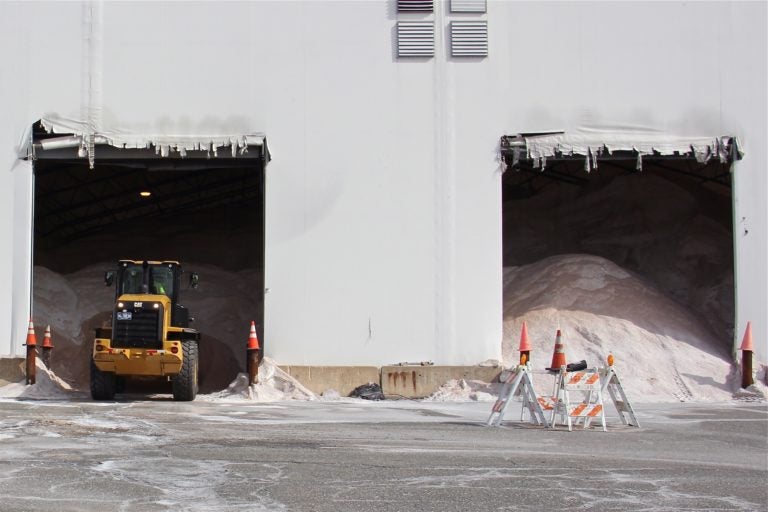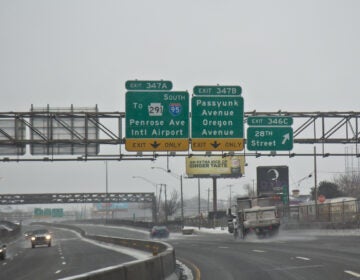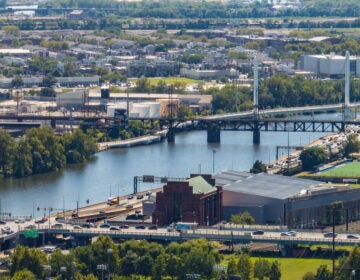Study: Road salts continue to build up in the Brandywine, damaging watershed
Researchers say the study is one of the first to evaluate the specific causes of salty water within a smaller watershed.
Listen 1:16
Road salt fills a storage barn in Southwest Philadelphia. (Emma Lee/WHYY)
From Philly and the Pa. suburbs to South Jersey and Delaware, what would you like WHYY News to cover? Let us know!
Road salts are impacting the health of the East Branch Brandywine Creek by increasing salinity and metal concentrations in the water, according to a new Villanova University peer-reviewed study published in the journal Science of the Total Environment.
The Chester County creek supplies drinking water for residents in Downingtown and West Chester, and is a popular area for trout fishing.
The researchers, who sampled 13 locations of the creek over the course of a year, say the study is one of the first to evaluate the specific causes of salty water within a smaller watershed.
“If we know the cause, then we can say, ‘All right, do we need to limit development in a certain way? Do we need to change our road salt application rates before it gets as salty as our more urban streams?’” said researcher Steven Goldsmith, an environmental science professor at Villanova University.
Researchers also found copper and zinc were caused by wastewater effluent, and agricultural areas had higher levels of arsenic due to historic applications of pesticides.
The study did not evaluate impacts on wildlife or drinking water quality. However, research has found road salts can deplete oxygen levels fish rely on to survive.
Road salts can contaminate drinking water wells and cause health problems for people with high blood pressure, according to the Environmental Protection Agency.
As snow plows push salt to the side of the road, it can also infiltrate the soil and groundwater, Goldsmith said.
“You could also get even in your groundwater, in these areas of road salt application, higher inputs of things like zinc, copper and potentially even lead going into your streams as a result of that road salt being deposited on the side of the road,” he said.
A previous Villanova study found salt applications did not decline between 1999 and 2019 — and concentrations in the water had increased.
“I use the analogy of CO2 in the atmosphere. Once it’s there, it’s there for a hundred years — and once it goes in our groundwater on the side of our roads, it’s there for decades,” Goldsmith said. “It’s just building up as a bank account underneath the stream. And even in the summer months, it’s still salty because the groundwater is contaminated, and it keeps increasing year to year.”
He said he hopes his study will encourage townships and states to consider more judicious road salt application practices and thresholds on development, particularly in drinking water watersheds.
“It’s kind of a call-to-action in the sense that if you have more forested land in your upstream area, you’re seeing less of these impacts, too,” Goldsmith said.

Get daily updates from WHYY News!
WHYY is your source for fact-based, in-depth journalism and information. As a nonprofit organization, we rely on financial support from readers like you. Please give today.






